It’s that time of year again. Economists, banks and commentators start sharing their predictions for 2025’s capital growth around the nation. Plenty of us do it, but few get it right.
Today’s Sunday blog focuses on the predictions for 2024.
Who got it right? Who got it wrong, and why?
Firstly, let’s consider the annualised growth as of 1 November for our capital cities.
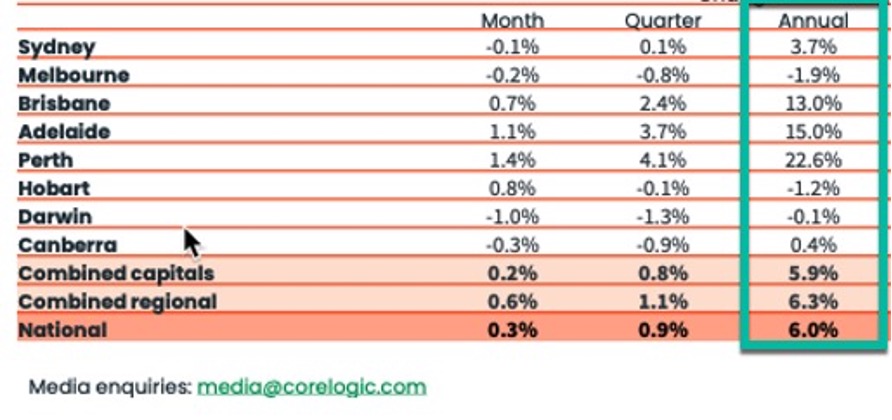
Perth takes first prize with 22.6% annualised growth. Our Western seaboard capital city has delivered well over the past few years, with 2024 showing optimal strength.
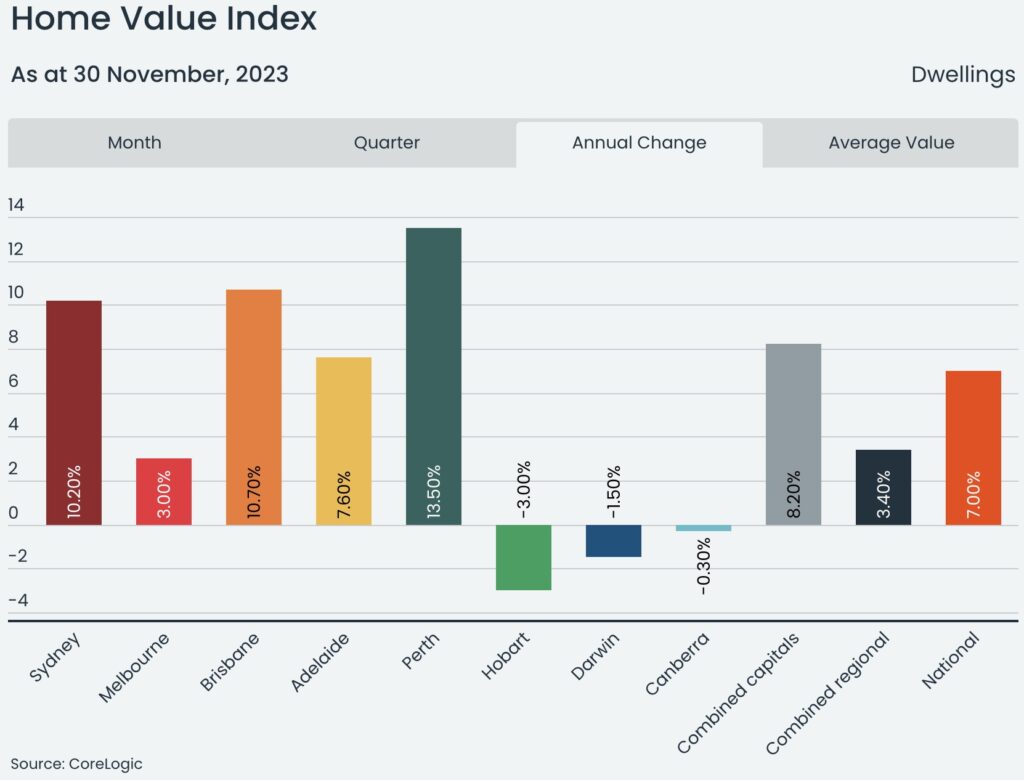
Second prize goes to Adelaide, and the city of churches has not disappointed. However, it’s current position on the mean reversion league ladder has us questioning whether it can continue at this pace for much longer. Brisbane has been shining bright for a while now, and the pending Olympic games hold our sunny capital in great stead if Sydney’s capital growth performance leading into 2000 is anything to go by. We all know that there is more to growth drivers than hosting the Olympic Games though. Post COVID changes, fuelled by working from home options propelled the Queensland market significantly. Interstate migration tells the story. Although, for 2024, “Melbourne, Brisbane, and Perth emerged as key cities to watch out of all major metros, though each experienced different trajectories. Melbourne, which returned briefly to positive net migration for the first time since COVID-19, saw a significant boost in inbound moves early in the year. However, it struggled to maintain momentum, with Brisbane quickly overtaking it as the city with the highest positive net migration.” (Source: Muval)
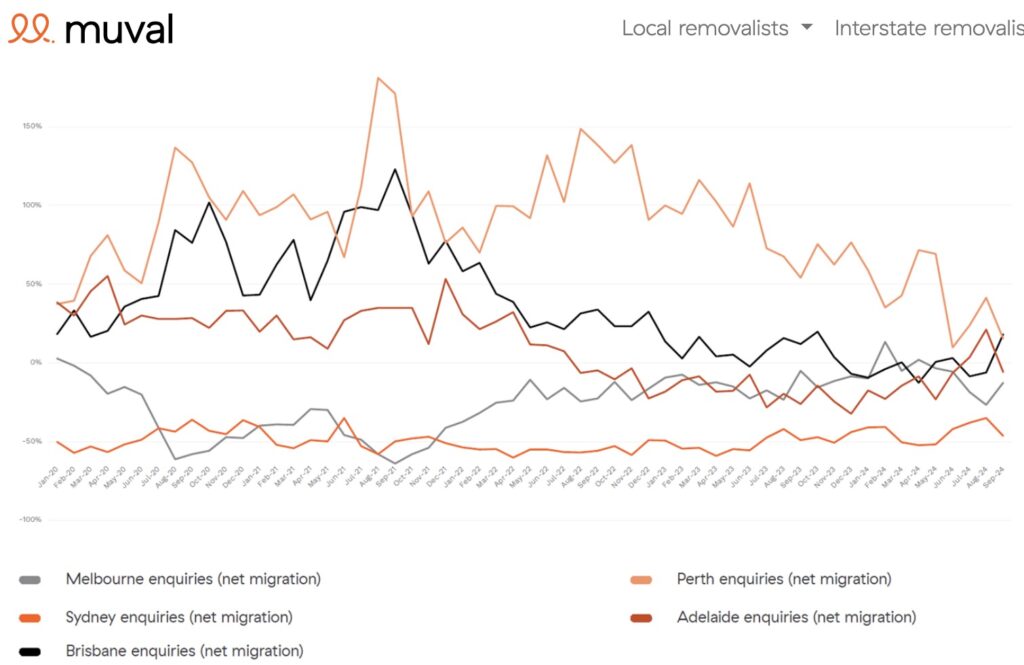
Darwin, Hobart and Melbourne have all exhibited negative growth; something that none of the following forecasters predicted. So, what went pear-shaped for these cities, and how did the economists and banks get things wrong?
Let’s first look at Westpac Bank’s forecasts. The figures are quite moderated compared to actual, with Melbourne’s value loss underestimated, and Perth, Brisbane and Adelaide’s gains overlooked.
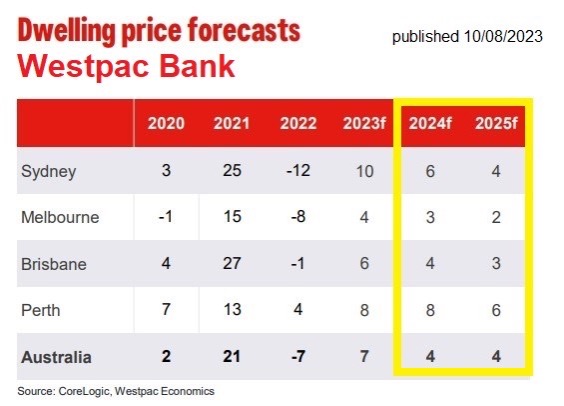
PropTrack was slightly closer to the pin, identifying the negative price movement cities. However, PropTrack also underestimated the three double digit growth cities.
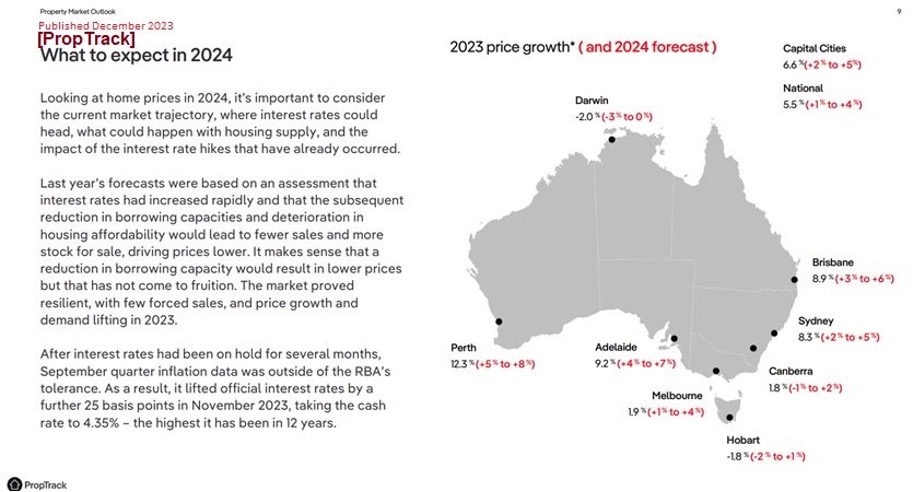
SQM’s range specification allowed them a little more leeway, and they did identify the three negative performers also, however SQM also underestimated the three cities on the podium.
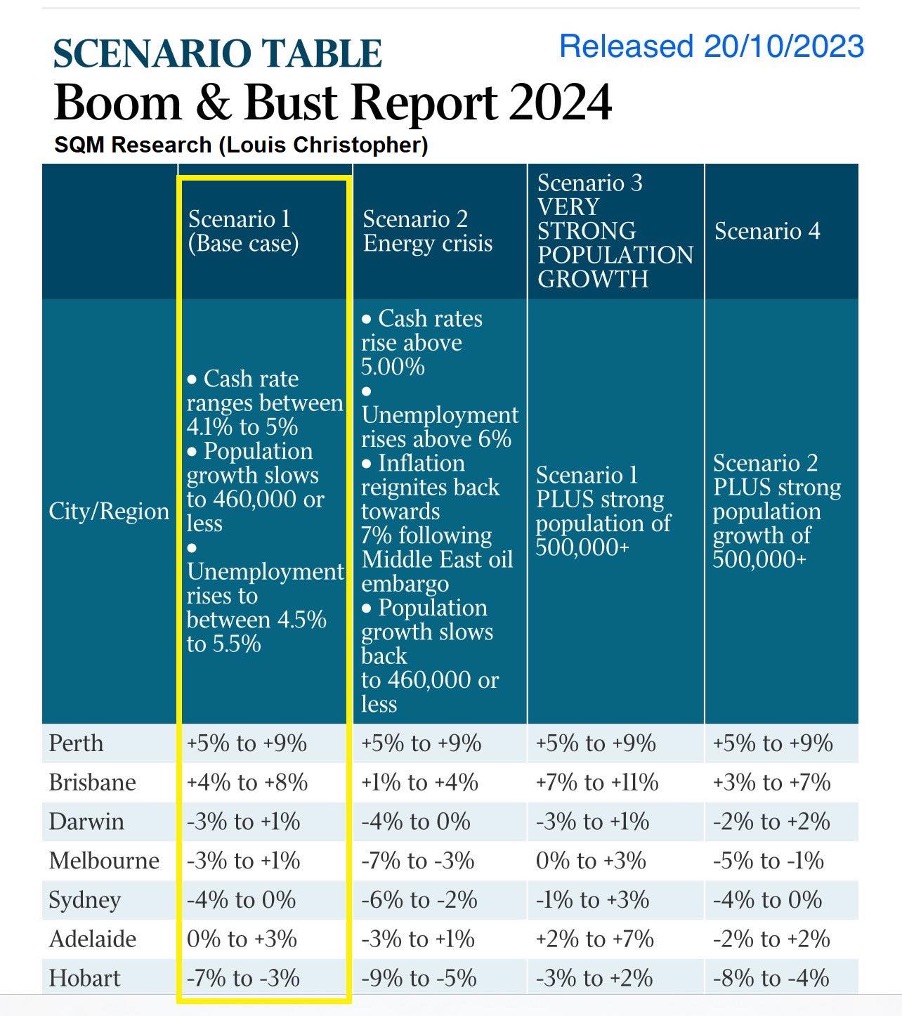
The chart below references three important metrics, (interest rates, population growth and unemployment), but there is much more to property market performance than these three metrics alone. Public and private sector economic growth, education and health services, job opportunities and government spending also count for a lot, and in concert, all these growth drivers can spell prosperity and capital growth for a city.
The chart below shows that quite a few predictions missed the mark, particularly that of Adelaide. Tipped to take out the wooden spoon, Adelaide indeed proved this prediction wrong in 2024. Adelaide’s housing market has been the strongest in the country since the pandemic, with house prices up 60% over the past four years.
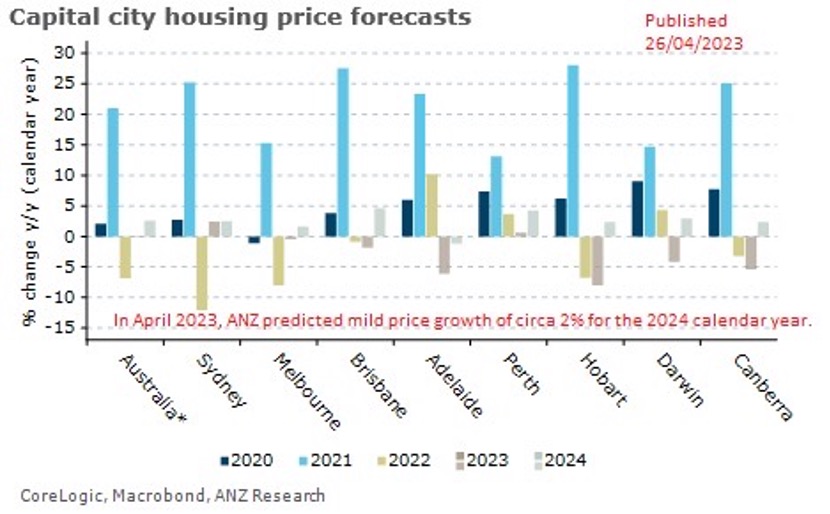
Adelaide’s property values have grown due to a combination of factors, including:
- The number of people moving to Adelaide has increased, especially during the pandemic. This has led to high demand for housing.
- The number of properties available for sale has decreased, while the demand for housing remains high.
- Adelaide’s homes have been relatively affordable compared to other cities, which has contributed to their strong growth.
- The pandemic accelerated the population growth in Adelaide, which has contributed to the growth of the property market
- South Australia’s economy has been the top performing economy in the nation for two years in a row. The state’s government has supported the economy through infrastructure projects, housing, tax cuts, and attracting major events.
NAB’s predictions weren’t too dissimilar to Westpac’s, with moderated figures and no identification of the markets that slipped into negative territory.
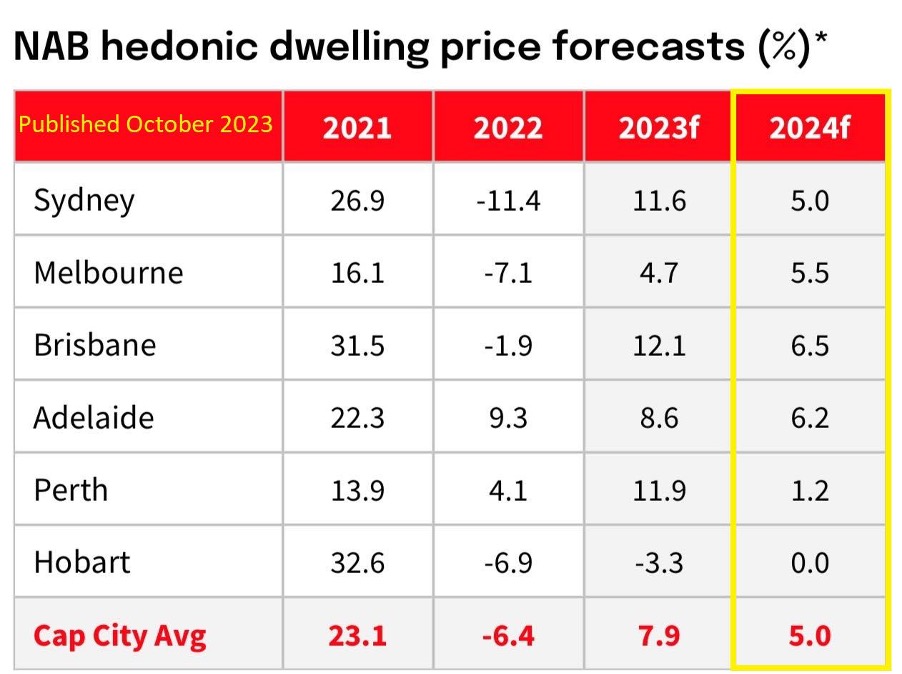
And Domain’s outlook, (as detailed and segmented as it is), only identified a slight negative overall result for Hobart units.
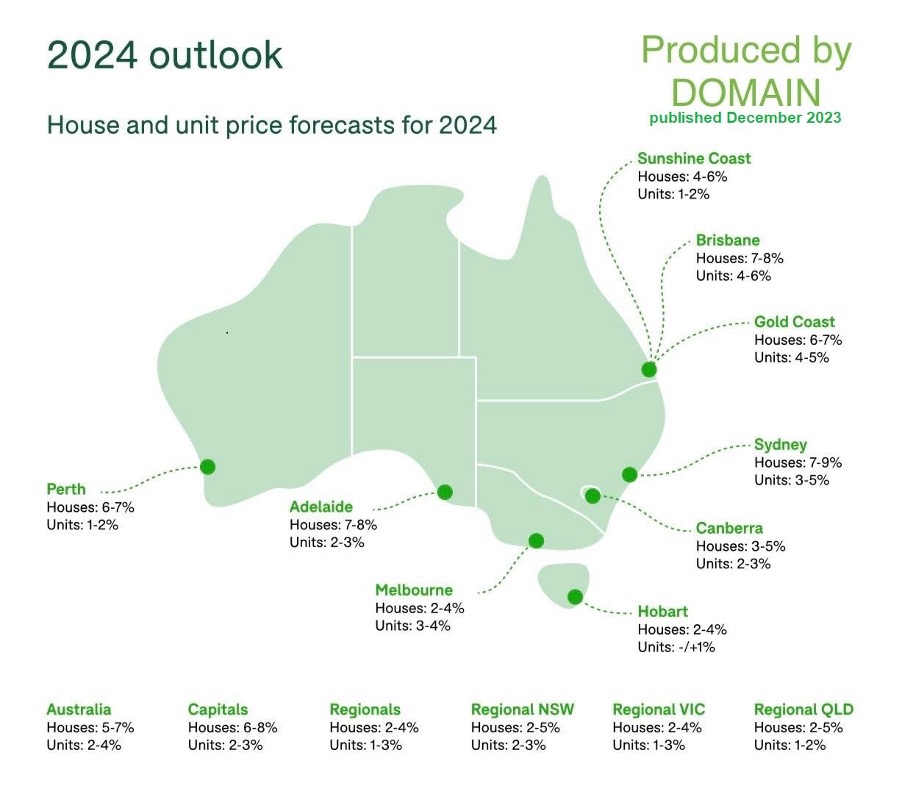
How did so many miss out on identifying Melbourne’s miserable performance? And why was Perth’s stellar run in 2024 overlooked?
There are several reasons for Perth’s out-performance;
- More than 80,000 immigrants moved to Perth in the past year, and the state’s population is growing rapidly.
- Western Australia has a low unemployment rate, which increases demand for housing.
- Perth’s housing values are more affordable than other capital cities, and are considered to be the most affordable in Western Australia.
- East coast investors have been buying houses in Perth, attracted by the prospect of high rent returns.
- Perth’s economy is strong, and the city has resource-based job opportunities.
However, we need to remember that Perth underperformed for a long period, and some would argue that it is still catching up.
Conversely, Melbourne’s median property value has fallen by 1.9% to date over the past year, which is the worst performance of any capital city.
Melbourne’s property market has declined in value for several reasons, including:
- Land tax changes: The Victorian government’s new land tax regime, which took effect in January 2024, has increased holding costs for investors. The new threshold is $50,000, which means almost all apartments are subject to land tax. Many sales have been investor-led throughout 2024 and the data supports this.
- Owerous rental reforms: Investors have far less control of their own asset in Victoria due to new tenancy legislation, mandatory compliance testing and tougher minimum standards. This has broadly been viewed as a disincentive for investment in Victoria.
- Increased supply: There has been a build-up of listings for sale.
- Government taxes: Government taxes have driven investors to sell.
- Buyer demand: Buyer demand has thinned, although interstate investor interest is notable, particularly since mid-year. The value proposition and future potential for mean reversion seems to be outweighing the negative sentiment around land tax for investors.
- High-rise apartments: A higher count of high-rise apartments have scaled down median values in many inner-city suburbs.
- Tree-changers: Tree-changers during the pandemic have played a role in bringing down prices in high-density areas. Due to remote work arrangements, many tree-changers have stayed put.
And in all honesty, I had a chance to make predictions myself when The Property Trio recorded our picks at the start of the year. I too got it wrong on many counts. I put it down to a combination of errors; firstly, I didn’t deep-dive into the multiple layers of growth drivers and economic influencers for each city. Secondly, I likely carried optimistic bias. I really wanted to see Melbourne recover and I paid attention to some of the positives and underestimated the negative impact of the legislative and tax changes that impacted our state in 2024.
What does this all mean?
We can’t just simply rely on predictions and charts when navigating an investment decision. As we can see above, many of our major banks and economists didn’t predict the capital city growth performance.
More importantly, there are markets within markets, and price segments within broad statistics. A simple, headline figure never tells a full story.
We look forward to digesting some of the reasons and rationale for 2025’s projections.
Special thanks to my industry friend, Simon Pressley for not only providing me with these charts, but always questioning the why (and often the really??) when it comes to cited figures. I’ll let Simon share his 2024 predictions, (to date they are impressively close to actual), but this article demonstrates why market analysis goes so much beyond just the capitals.
REGISTER TO OUR NEWSLETTER
INFORMATION
CONTACT US
1A/58 ANDERSON STREET,
YARRAVILLE VIC 3013
0422 638 362
03 7000 6026
CATE@CATEBAKOS.COM.AU
